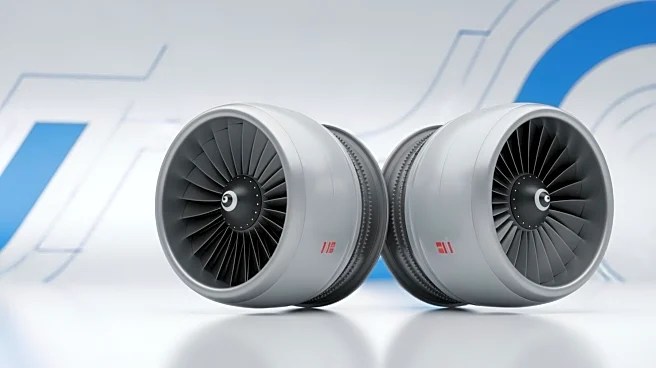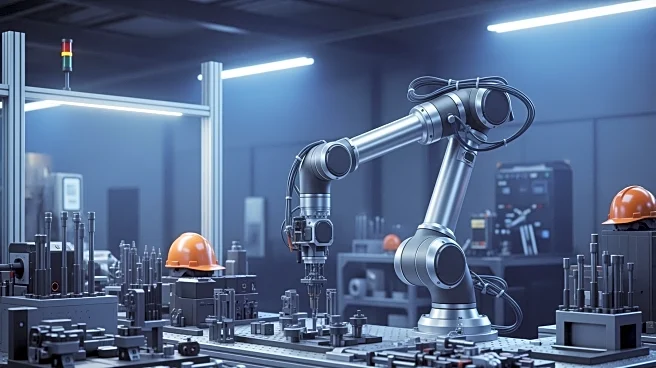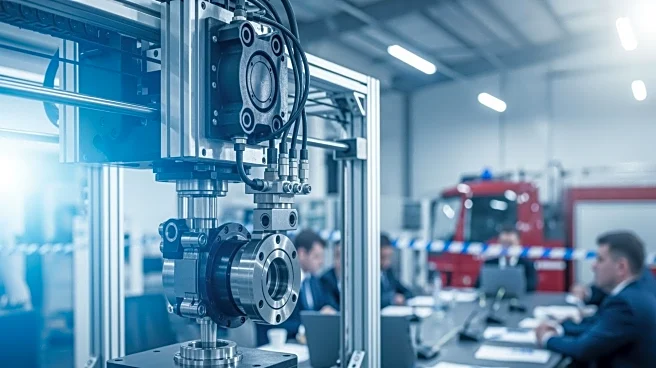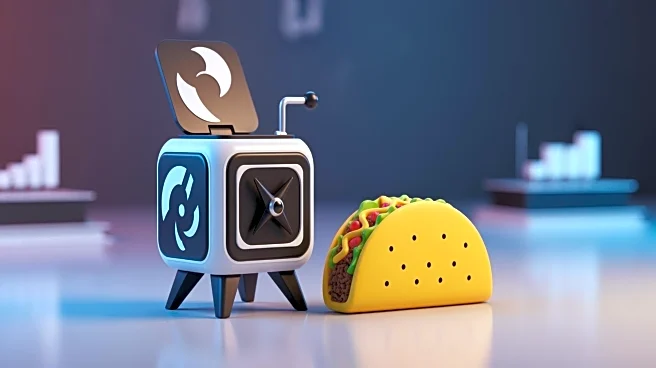What's Happening?
Konrad, an Austrian manufacturer, has announced the launch of its new and improved Mounty MT40-4 skyline system. This latest model builds upon the strengths of its predecessor, the Mounty MT40-3, by offering
enhanced performance, efficiency, and comfort. Key improvements include a larger working area due to an extended lifting arm, greater lifting capacity facilitated by an articulated boom with a toggle lever system, and optimized weight distribution achieved by repositioning the support cable and auxiliary cable drums. These advancements are designed to set new standards in reach, lifting capacity, and overall performance, according to a press release from Konrad.
Why It's Important?
The introduction of the Mounty MT40-4 is significant for the forestry industry, as it promises to enhance operational efficiency and productivity. By improving the reach and lifting capacity, the new system allows for more effective handling of timber, which can lead to increased output and reduced operational costs. The optimized weight distribution also contributes to better stability and safety during operations, which is crucial for minimizing risks in forestry work. These advancements may benefit forestry companies by enabling them to meet growing demands for timber while maintaining high safety standards.
What's Next?
As Konrad rolls out the Mounty MT40-4, forestry companies are likely to evaluate the system's performance in real-world conditions. The industry may see a shift towards adopting this new technology, especially if it proves to deliver on its promises of improved efficiency and safety. Additionally, competitors in the forestry machinery market may respond by developing similar or superior technologies to maintain their market positions. The adoption of the Mounty MT40-4 could also influence future innovations in forestry equipment, driving further advancements in the sector.
Beyond the Headlines
The launch of the Mounty MT40-4 may have broader implications for sustainable forestry practices. By enhancing efficiency and reducing operational costs, the system could support more sustainable harvesting methods, potentially reducing the environmental impact of forestry operations. Furthermore, the focus on safety and performance may encourage other manufacturers to prioritize these aspects in their designs, contributing to a safer and more sustainable industry overall.











